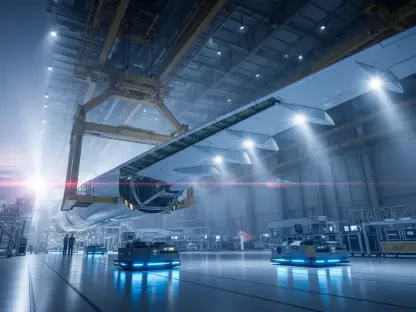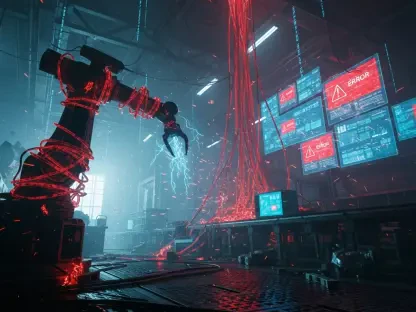Mexico finds itself at a pivotal moment, with the opportunity to transform from a manufacturing powerhouse into a global leader in technological innovation, particularly in industries like automotive and aerospace, where the shift toward electric vehicles, robotics, and advanced engineering is redefining the landscape. For decades, the country has been a key player in assembly and production, but the rise of new technologies is changing priorities. Ambitious projects and a growing emphasis on domestic design signal potential, yet significant challenges like talent shortages and reliance on foreign technology threaten to slow progress. The path forward demands strategic investments, robust partnerships, and a commitment to building a skilled workforce. As global markets increasingly prioritize innovation over mere production, Mexico’s ability to adapt will determine whether it can carve out a new identity on the world stage.
The Drive Toward Innovation in Key Industries
Automotive Sector: From Assembly to Electric Ambition
Mexico’s automotive industry, long a backbone of its economy, is navigating a profound transition as the global demand for electric vehicles and automation reshapes priorities. Historically focused on assembling vehicles for international brands, the sector now aims to lead in EV production. A flagship initiative, the TT (Totalmente Tlaxcalteca), stands out with over 80% of its components sourced domestically, symbolizing a bold step toward self-reliance. This project reflects a broader ambition to create value chains that prioritize local innovation over imported parts. However, the road is far from smooth, as early movers in the EV space face systemic barriers that hinder scalability. The industry must balance immediate production goals with long-term investments in technology to stay competitive in a rapidly evolving market.
Challenges persist, as illustrated by the struggles of pioneering companies like Zacua, which entered the EV market with high hopes but encountered limited government incentives and a heavy dependence on foreign components. This dependency underscores a critical gap in achieving technological sovereignty, where Mexico risks lagging behind if it cannot develop homegrown solutions for key elements like batteries and motors. Industry experts point to the need for policies that support local R&D and incentivize domestic production. Without such measures, the automotive sector may remain tethered to external supply chains, unable to fully capitalize on the global shift to sustainable transportation. Addressing these hurdles is essential for transforming ambition into tangible leadership on the world stage.
Aerospace Advances: Engineering a High-Flying Future
In the aerospace sector, Mexico is demonstrating remarkable potential through projects that highlight domestic engineering prowess, such as the Halcón 2 light aircraft developed by Horizontec. These initiatives are more than just technical achievements; they represent a shift toward high-value, knowledge-based work that could position the country as a serious contender in global aerospace innovation. The ability to execute such complex projects domestically signals a maturing industry, yet the challenge lies in sustaining this momentum. With international competition intensifying, the sector must focus on building a robust ecosystem that nurtures talent and fosters original design rather than relying on foreign blueprints.
Despite these advancements, systemic barriers threaten to undermine progress, particularly the heavy reliance on imported technology and designs that limits true independence. The aerospace industry also faces a shortage of specialized professionals, a gap that could stall growth if not addressed urgently. Employment in regions like Querétaro has shown promising recovery, but scaling this success nationwide requires targeted investments in education and training. Reducing dependency on external resources will be key to establishing a self-sufficient industry capable of meeting global demands. Only through deliberate efforts to cultivate local expertise can Mexico hope to soar beyond its current achievements and claim a lasting spot in the aerospace arena.
Addressing the Talent Gap
Workforce Challenges: A Barrier to Growth
One of the most pressing obstacles to Mexico’s tech innovation aspirations is a persistent shortage of skilled talent across critical industries. A recent study by ManpowerGroup reveals that 70% of employers in the country struggle to fill positions in fields like IT, engineering, and data analysis. As automation continues to replace manual labor, the demand for workers with advanced technical skills has surged, leaving many companies scrambling to keep pace with technological advancements. This gap not only hampers immediate growth but also risks derailing long-term ambitions if the workforce cannot meet the evolving needs of high-tech sectors. Bridging this divide is a fundamental step toward unlocking the country’s full potential.
The shift from traditional labor to specialized roles is reshaping the employment landscape, with profound implications for industries like automotive and aerospace. Positions in robotics, software development, and battery technology for EVs are increasingly critical, yet the supply of qualified candidates remains insufficient. This mismatch highlights a disconnect between current educational outputs and industry requirements, where outdated curricula fail to prepare students for modern challenges. Employers emphasize the urgency of adapting to data-driven processes and digital tools, which now permeate even administrative roles. Without swift action to realign training with these emerging demands, Mexico’s innovation trajectory could face significant setbacks.
Industry-Academia Collaboration: Building Skills for Tomorrow
A promising avenue for addressing talent shortages lies in strengthening partnerships between industry and academia, a model already showing results in certain regions. In Querétaro, for instance, collaborations with universities have driven growth in aerospace employment, with numbers climbing from 8,500 to 10,500 in recent years through dual education programs. These initiatives combine theoretical learning with hands-on experience, ensuring graduates are equipped with skills directly applicable to industry needs. Such efforts demonstrate how targeted training can create a pipeline of qualified professionals, but the challenge remains in replicating this success on a national scale. Expanding these partnerships could be a game-changer for workforce development.
Scaling up industry-academia collaboration requires overcoming logistical and financial hurdles, as well as aligning educational frameworks with the rapid pace of technological change. Beyond regional successes, there is a need for a cohesive national strategy that integrates technical programs into broader curricula, preparing students for careers in automation, EV technology, and aerospace engineering. Industry leaders advocate for increased funding for training centers and incentives for companies to invest in employee development. By fostering a culture of continuous learning and adaptation, Mexico can build a resilient workforce capable of driving innovation. The foundation exists, but sustained commitment from both public and private sectors will be crucial to transform isolated achievements into widespread impact.
The Path to Technological Sovereignty
Investing in R&D: Designing Mexico’s Future
Central to Mexico’s vision of becoming a tech innovation hub is a substantial commitment to research and development, a shift that moves the country beyond its manufacturing roots toward original design. Historically, much of the production in automotive and aerospace has relied on foreign concepts, limiting the scope for true innovation. Investing in domestic R&D offers a pathway to create proprietary technologies, as seen in projects like the TT vehicle and Halcón 2 aircraft. These endeavors highlight the potential for Mexico to lead in niche markets, but they also expose the gap between current capabilities and the goal of technological autonomy. Building a robust R&D ecosystem is essential to close this divide and establish a competitive edge.
The long-term vision for R&D involves not just funding but also cultivating an environment where innovation thrives through policy support and infrastructure. Challenges such as limited incentives and access to cutting-edge resources must be addressed to encourage local engineers and designers to push boundaries. Industry stakeholders stress that without a concerted effort to prioritize homegrown solutions—particularly in areas like EV components and aerospace systems—Mexico risks remaining a secondary player in global markets. Strategic investments now can lay the groundwork for a future where the country is known for creating, not just assembling, transformative technologies. The stakes are high, and the time to act is now.
Reflecting on Transformative Steps Taken
Looking back, Mexico took significant strides in redefining its industrial identity by focusing on the automotive and aerospace sectors as pillars of innovation. Efforts to develop electric vehicles and domestic aerospace projects like Halcón 2 showcased an emerging capacity for high-value work. Collaborations between industry and academia in regions like Querétaro proved effective in addressing talent shortages, while initiatives to boost local R&D aimed to reduce reliance on foreign technology. These steps marked a departure from a manufacturing-centric past, reflecting a deliberate push toward technological leadership. To build on this foundation, the focus must now shift to scaling successful models nationwide, ensuring education keeps pace with industry needs, and securing sustained investments in innovation. By prioritizing these areas, Mexico can position itself as a formidable player in the global tech landscape for years to come.









